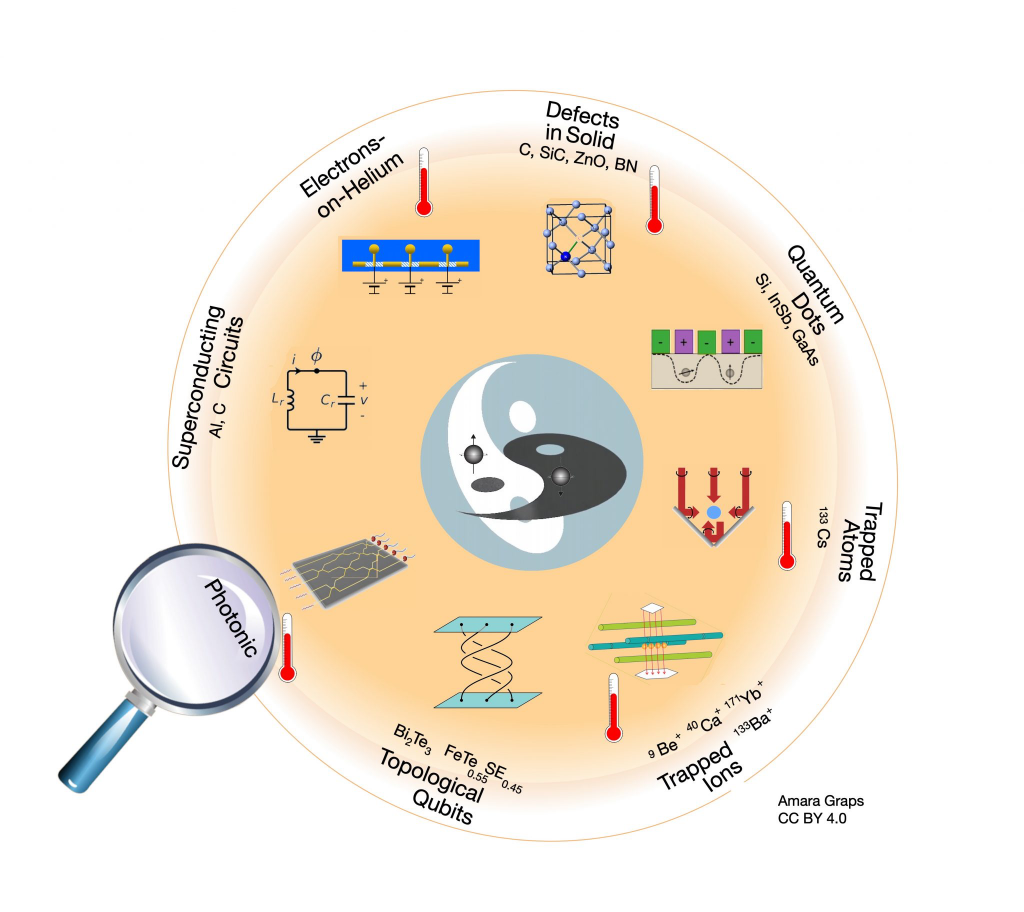

Personal collective of ideas, thoughts and notes


Dilution Refrigerator, uses liquid helium
Absolute zero, optimal operating temp – 273 celcius
Top to bottom – different stages of cooling, filters, amplifiers
Sample holder holds quantum processor
CPU vs QPU
CPU – data/voltage/1’s 0’s flows through the gates (and, or, xor, etc.)
QPU – Data is on the chip, circuit is on the chip, pulses are sent to the chip
chip created by lithography, metal deposition, all, oxide, etc.
Quantum Gates
Called block sphere
Pulses represent the gates.

Rotate qubit from ground state to 1
Example: Ex Pi rotation
Send another pulse, Pi/2

Quantum Entaglement
2 Qubits, and some interaction between them

When you entangle boxes, you can change probablities
Notes:
Quantum Systems are exponentially powerful
Based on particles: 2^500 – More particles in the universe
Challenges:
Qubit – simplest quantum system
Entanglement-
Lecture 1: Double Slit Experiment



If we add a measuring device just after the slits to track which slit the electron goes through, it “disrupts” the measurement and we get the 2nd pattern. If we use a very slight/dim light enough light, we get the 3rd “expected” pattern, but we also miss a lot of the electrons and may not capture the pattern.
= Hesienburgs uncertainty principle = Impossible to design apparatus which can detect which slit it went through without disturbing the interference pattern.
Traveling sales person problem
Solve problems which are NP hard – and they can’t be solved in polynomial time.
P versus NP problem: full polynomial versus nondeterministic polynomial problem
A P problem is one that can be solved in “polynomial time,” which means that an algorithm exists for its solution such that the number of steps in the algorithm is bounded by a polynomial function of n, where n corresponds to the length of the input for the problem. Thus, P problems are said to be easy, or tractable. A problem is called NP if its solution can be guessed and verified in polynomial time, and nondeterministic means that no particular rule is followed to make the guess.
RSA
A good simple overview: https://simple.wikipedia.org/wiki/RSA_algorithm
https://www.npmjs.com/package/big-integer
https://www.youtube.com/watch?v=vgTtHV04xRI
You must be logged in to post a comment.